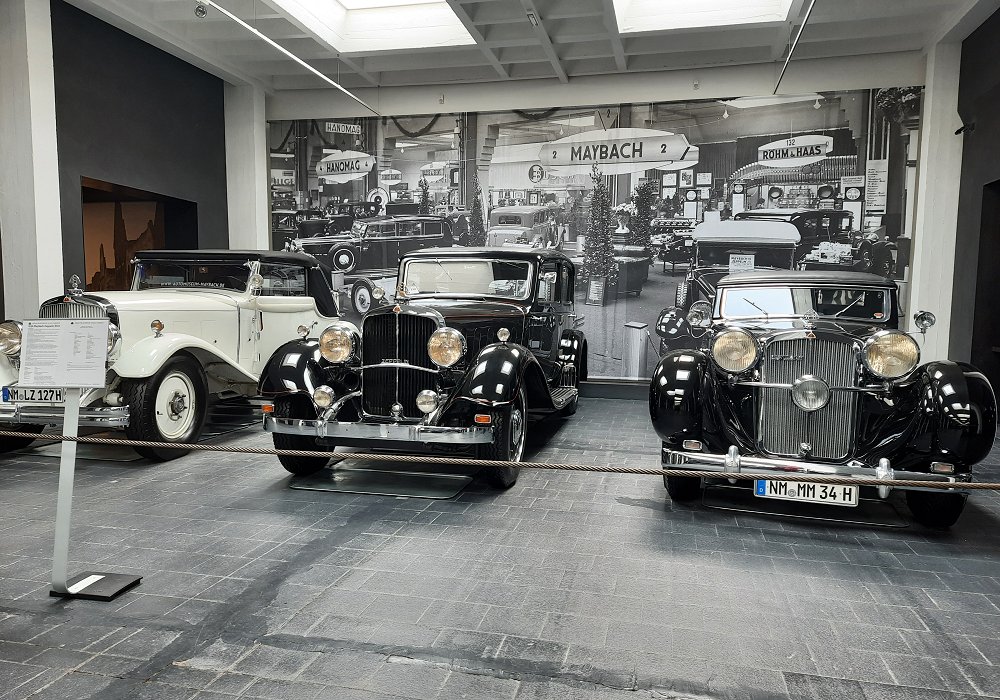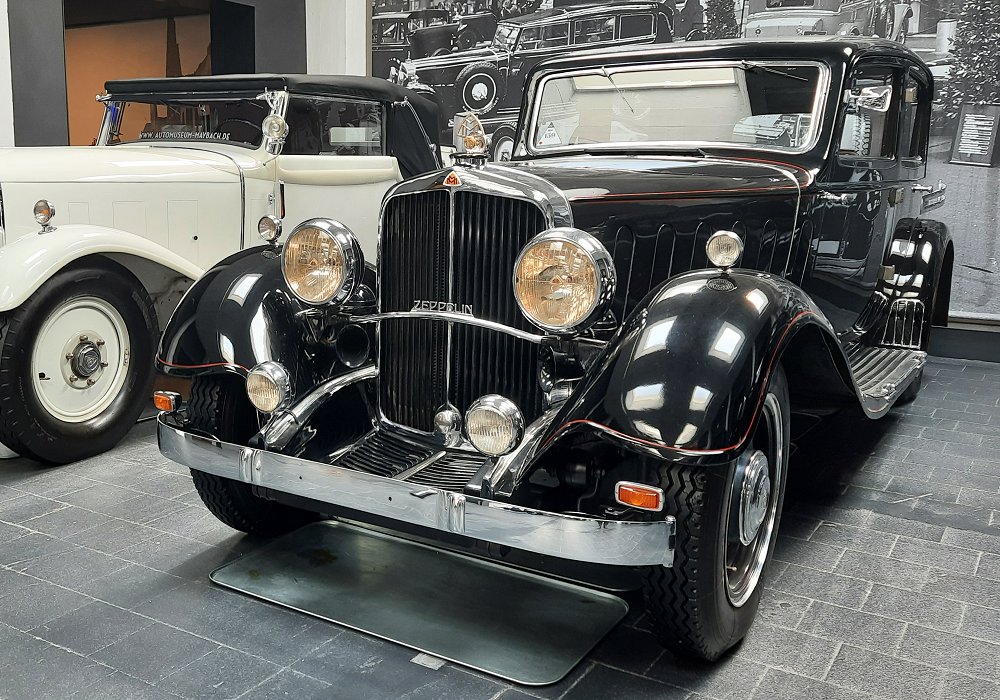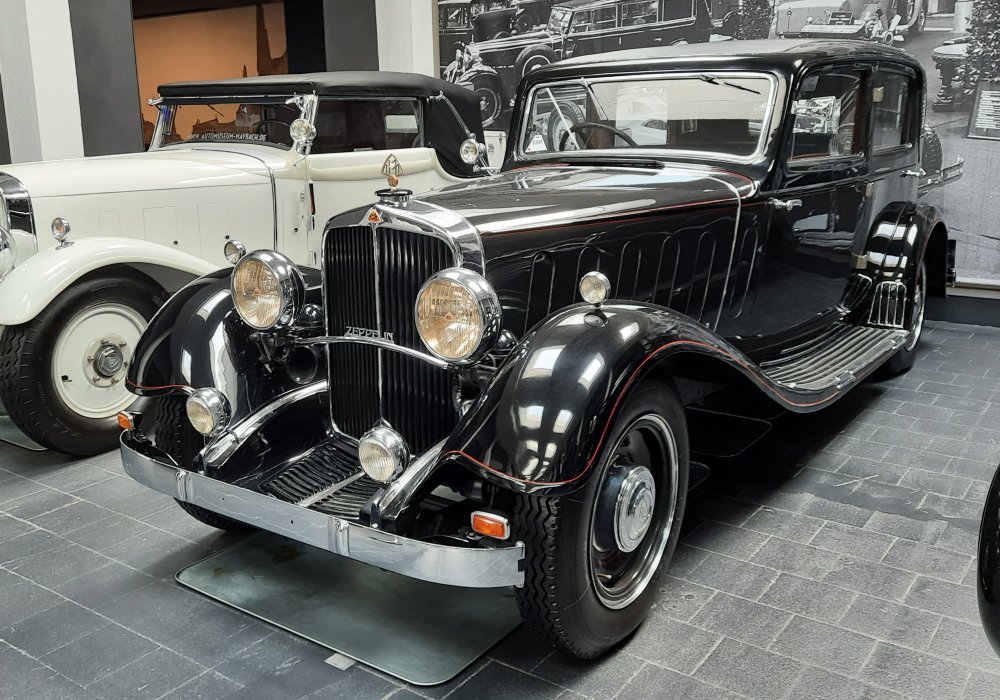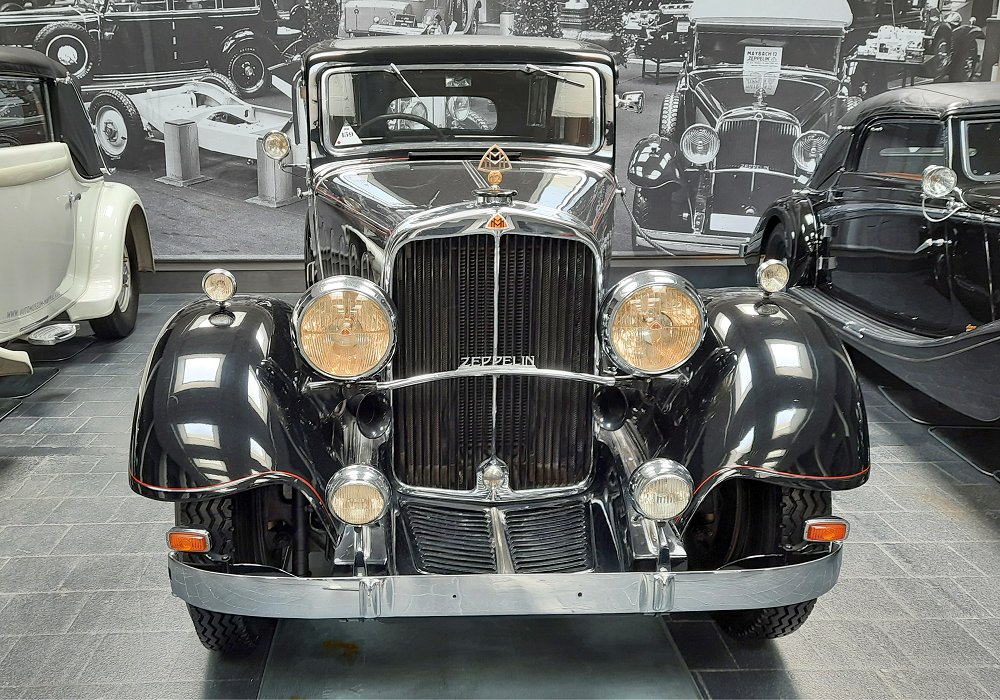Description
The Maybach DS 8 Zeppelin Limousine by Spohn was one of the most imposing, prestigious and technically advanced luxury automobiles produced anywhere in the world during the early 1930s. Built on Maybach’s ultimate pre-war chassis and bodied by Spohn — the marque’s closest and most accomplished coachbuilding partner — it represented the peak of German bespoke motoring. The DS 8 was the largest, most powerful and most luxurious Maybach ever built before the Second World War, and the Spohn Limousine body was its most dignified and formal expression.
The DS 8 Zeppelin chassis, introduced in 1931, was the culmination of Maybach’s engineering expertise. At its heart was a monumental 8.0-litre V12 engine, one of the largest and most refined automobile engines of its time. Developing around 200 horsepower, the V12 delivered immense torque and a uniquely smooth, turbine-like character derived from Maybach’s experience in aircraft and airship engine construction. The engine moved the heavy limousine with ease, providing quiet, unstrained acceleration and the ability to cruise at high speeds with remarkable refinement. Even among elite luxury cars of the day — including the Mercedes-Benz 770 “Großer Mercedes”, Horch 850 and Rolls-Royce Phantom II — the Maybach V12 was considered one of the most sophisticated powerplants available.
The DS 8 chassis was engineered for stability, comfort and strength. A massive ladder-frame carried the substantial weight of the limousine coachwork while delivering excellent rigidity. Suspension used long semi-elliptic leaf springs tuned for a cushioned, serene ride, and the car’s extended wheelbase provided impressive composure on long journeys. The DS 8 was not designed for sporting agility, but rather for stately, unhurried progression — and it excelled at delivering smooth, quiet, authoritative motion over long distances.
Maybach equipped the DS 8 with an advanced dual-range gearbox, giving the driver a set of low and high gearing options to adapt to city traffic or open-road cruising. Though not as complex as the later Wandler torque-converter system, this early dual-range transmission was far ahead of most contemporary luxury cars in terms of flexibility and smoothness. It reduced the driver’s workload — especially important in a limousine intended for chauffeur operation — and contributed to the car’s serene performance.
The Spohn Limousine body represented the highest level of formal coachwork available on the DS 8 chassis. Built entirely by hand at Spohn’s Ravensburg workshops, the design emphasised dignity, proportion and understated grandeur. Large, gracefully contoured fenders framed a long, imposing body with a tall roofline, expansive side windows and broad rear doors that allowed effortless entry and exit. The limousine was intended for stately occasions and elite clientele, and its commanding but elegant presence made it one of the most impressive formal cars of its day.
Inside, the DS 8 Zeppelin Limousine Spohn offered unmatched luxury and craftsmanship. The rear compartment — the focal point of any Pullman or formal limousine — was a private salon trimmed in the finest materials available. Seating consisted of deep armchairs or a full-width rear bench upholstered in premium leather or tailored wool fabrics. Polished hardwood veneers, thick carpeting, precision-made metal fittings and handcrafted cabinetry created an interior environment on par with private railcars or luxury yachts. Amenities often included fold-out writing desks, smoking sets, vanity mirrors, custom lighting, intercom communication and heater units. A division window separated the chauffeur from passengers, ensuring privacy and quiet travel.
On the road, the DS 8 Limousine delivered the calm, effortless performance expected of the world’s finest luxury cars. The V12 engine provided smooth, abundant power, while the long wheelbase and well-tuned suspension absorbed road imperfections with dignity. Steering was steady and predictable, ideal for a chauffeur, and braking — via large mechanical drums — was strong for such a substantial automobile. The sense of composure and mechanical refinement made long-distance journeys extraordinarily comfortable, reinforcing the DS 8’s reputation as a peerless prestige vehicle.
Production numbers for the DS 8 Zeppelin were extremely limited due to its enormous cost and exclusivity. Only a small number of chassis received Spohn limousine bodies, each one tailored precisely to its buyer’s specifications. As a result, surviving examples today are exceptionally rare, highly coveted by collectors and often considered museum-grade artefacts of pre-war German craftsmanship.
The Maybach DS 8 Zeppelin Limousine Spohn stands as one of the greatest achievements in early-20th-century automotive design. Combining Maybach’s supreme engineering with Spohn’s masterful coachwork, it represents the apex of pre-war European luxury motoring: powerful, refined, regal and meticulously crafted. Even today, it remains one of the most distinguished and awe-inspiring automobiles ever built.




